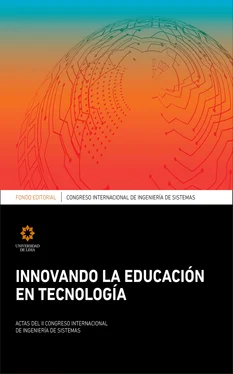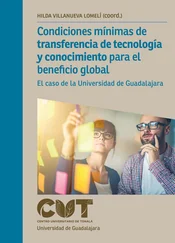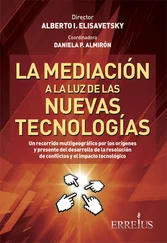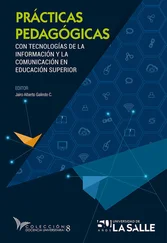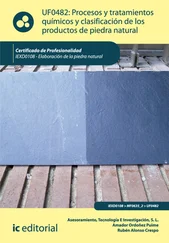A second problem refers to data privacy. It is very important to have an institutional strategy that clearly states what data needs to be collected from students and who has access to the data. Many educational institutions are not aware of all the data they collect (or can potentially collect); do not have mechanisms to control who has access to the data collected; and/ or do not have an internal policy to facilitate that the right people can make proper informed decisions, being able to access the data they are entitled to.
A third problem refers to always getting explicit consent from the students for collecting data. It is very important that students (who actually own the data) know at all times what data are being collected from them and for what purpose the data are going to be used. In addition, there are international laws such as the GDPR (General Data Protection Regulation) in Europe that require, among other things, the removal of data collected upon request by its owner. Many educational institutions do not have data collection ethics committees and are not prepared to delete collected data upon request.
A fourth problem refers to transparency, or rather lack of transparency, of many algorithms and systems which are private and whose code is not open. The lack of transparency prevents algorithms and systems from being audited to better understand how they work. Even if one relies on third-party algorithms and systems to make informed decisions, it is important to know how the results and visualizations they provide were obtained.
A fifth problem refers to bias. Many artificial intelligence systems use data collected in the past to make their calculations and predictions. However, data collected in the past may have important biases, such as a gender imbalance, which could lead to promoting more male students versus female students or vice versa. In general, it is important to take minorities into account when using data from the past as input so that these are not penalized.
Finally, it is important to bear in mind that humans may misinterpret the results and visualizations obtained from the data processed. Sometimes there are people who deliberately twist the data to fit a pre-designed theory, instead of discarding this theory if data advise to do so. Actually, from a very large dataset, and taking only a subset of it, erroneous and unreproducible conclusions can be very easily reached.
Innovation in engineering education must be informed by data. Teachers must be aware of their students’ performance (individually and at the class level) to support those who need more help as well as offer top quality educational resources progressively improved according to the data collected. Students should define a curriculum adapted to their particular needs and develop their SRL skills. Institutions must create specialized units for data collection and processing, and adequately train their staff (including teachers) for a data management culture. Nevertheless, there are numerous risks to be aware of, and a trade-off is needed so that these risks do not slow down innovation in educational institutions.
Alario-Hoyos, C., Pérez-Sanagustín, M., Delgado-Kloos, C., Parada G., H. A., & Muñoz-Organero, M. (2014). Delving into participants’ profiles and use of social tools in MOOCs. IEEE Transactions on Learning Technologies, 7 (3), 260-266.
Alario-Hoyos, C., Muñoz-Merino, P. J., Pérez-Sanagustín, M., Delgado Kloos, C., & Parada G., H. A. (2016). Who are the top contributors in a MOOC? Relating participants’ performance and contributions. Journal of Computer Assisted Learning, 32 (3), 232-243.
Alario-Hoyos, C., Estévez-Ayres, I., Pérez-Sanagustín, M., Delgado Kloos, C., & Fernández-Panadero, C. (2017). Understanding learners’ motivation and learning strategies in MOOCs. Intern. Review of Research in Open and Distributed Learning, 18 (3), 119-137.
Alario-Hoyos, C., Estévez-Ayres, I., Delgado Kloos, C., Villena-Román, J., Muñoz-Merino, P. J., & Llorente-Pérez, E. (2019). Redesigning a freshman engineering course to promote active learning by flipping the classroom through the reuse of MOOCs. International Journal of Engineering Education, 35 (1), 385-396.
Alonso-Mencía, M. E., Alario-Hoyos, C., Maldonado-Mahauad, J., Estévez-Ayres, I., Pérez-Sanagustín, M., & Delgado Kloos, C. (2019). Self-regulated learning in MOOCs: lessons learned from a literature review. Educational Review (published online), 1-27.
Baepler, P., Walker, J. D., & Driessen, M. (2014). It’s not about seat time: Blending, flipping, and efficiency in active learning classrooms. Computers & Education, 78 , 227-236.
Delgado Kloos, C., Catalán-Aguirre, C., Muñoz-Merino, P. J., Alario-Hoyos, C. (2018). Design of a Conversational Agent as an Educational Tool, In Learning with MOOCs 2018 (LWMOOCS V) (pp. 27-30). IEEE.
Dringus, L. P. (2012). Learning analytics considered harmful. Journal of Asynchronous Learning Networks, 16 (3), 87-100.
Ferguson, R. (2012). Learning analytics: drivers, developments and challenges. International Journal of Technology Enhanced Learning , 4(5/6), 304-317.
Khalil, M., Taraghi, B., & Ebner, M. (2016). Engaging Learning Analytics in MOOCs: the good, the bad, and the ugly. In Proceedings of the International Conference on Education and New Developments (END) (pp. 3-7).
Moreno-Marcos, P. M., Alario-Hoyos, C., Muñoz-Merino, P. J., & Delgado Kloos, C. (2018). Prediction in MOOCs: A review and future research directions. IEEE Transactions on Learning Technologies (published online) , 1-19.
Moreno-Marcos, P. M., Alario-Hoyos, C., Muñoz-Merino, P. J., Estévez-Ayres, I., & Delgado Kloos, C. (2018). Sentiment Analysis in MOOCs: A case study. In 2018 IEEE Global Engineering Education Conference (EDUCON) (pp. 1489-1496). IEEE.
Pérez-Sanagustín, M., Hilliger, I., Alario-Hoyos, C., Delgado Kloos, C., & Rayyan, S. (2017). H-MOOC framework: reusing MOOCs for hybrid education. Journal of Computing in Higher Education, 29 (1), 47-64.
Ruipérez-Valiente, J. A., Muñoz-Merino, P. J., Leony, D., & Delgado Kloos, C. (2015). ALASKA: A learning analytics extension for better understanding the learning process in the Khan Academy platform. Computers in Human Behavior, 47 , 139-148.
Slade, S., & Tait, A. (2019). Global guidelines: Ethics in learning analytics . Oslo: International Council for Open and Distance Education (ICDE).
Zimmerman, B. J. (2013). Theories of self-regulated learning and academic achievement: An overview and analysis. In Self-regulated learning and academic achievement (pp. 10-45). Routledge.
Building Blocks for Powerful Ideas: Designing a Programming Language to Teach the Beauty and Joy of Computing
Jens Mönig
jens.moenig@sap.com/ Research Expert SAP, Germany
Recepción: 9-8-2019 / Aceptación: 21-8-2019
ABSTRACT. Snap! is a cloud-native graphical programming environment and an online community. It is the programming language made for UC Berkeley’s popular introductory CS course named “The Beauty and Joy of Computing”. Snap! is taught in colleges and high schools across the U.S. from Palo Alto to Philadelphia. It has been translated to more than 40 languages and is used around the world—from Göttingen to Beijing—for teaching and research. Snap! has been designed for inclusion. Its low floor welcomes beginners and its multi-media capabilities invite creative thinkers of all ages. At the same time, Snap! offers sophisticated abstractions that make it suitable for an intellectually rigorous introduction to computer science.
Читать дальше
